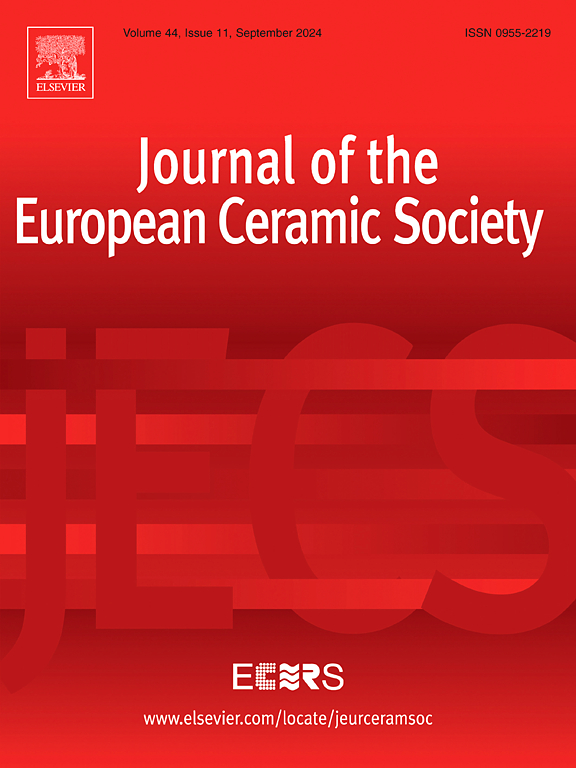Significant enhancement of comprehensive energy storage performance in BaTiO3-based ceramics through high-entropy design
IF 5.8
2区 材料科学
Q1 MATERIALS SCIENCE, CERAMICS
Journal of The European Ceramic Society
Pub Date : 2025-03-25
DOI:10.1016/j.jeurceramsoc.2025.117401
引用次数: 0
Abstract
Relaxor ferroelectric oxides with the feature of polar nanoregions (PNRs) have attracted extensive attention due to their unique structure and physical properties, which can be realized by disrupting the long-range ferroelectric ordering through enhancing composition disorder. To overcome the limitations of traditional dielectric materials for energy storage, great efforts have been made to design new high-entropy compounds for high performance dielectric capacitors, typically through substitutional doping that introduces local chemical and structural disorder. In this work, high-entropy perovskite oxides (Bi0.2Na0.2Ba0.2Ca0.2Sr0.2)TiO3 (BNBSCT), (Bi0.2K0.2Ba0.2Ca0.2Sr0.2)TiO3 (BKBSCT) and (La0.2Li0.2Ba0.2Ca0.2Sr0.2)TiO3 (LLBSCT) ceramics are proposed to significantly improve the energy storage performance of BaTiO3 ceramic by increasing the configurational entropy. The entropy-assisted synthesis approach, having A-site ions with different valence states and radii, can significantly increase the chemical disorder and lattice distortion of the high-entropy ceramics, resulting in strong local polar fluctuations which are found to influence the dielectric relaxor behavior, phase transitions and ferroelectric property. As a result, all the high-entropy ceramics exhibit higher maximum polarization (Pmax) and smaller remnant polarization (Pr) values. Furthermore, it is found that a combination of relatively high Pmax, low Pr and high dielectric breakdown strength (DBS) ensures that the LLBSCT high-entropy ceramic exhibits excellent recoverable energy density Wrec of 5.16 J/cm3, energy storage efficiency η of 88 %, and eminent charging-discharging capability (e.g., ultra-short discharge time t0.9 ∼ 68 ns, current density CD ∼ 716.51 A/cm2 and power density PD ∼ 85.98 MW/cm3 under an electric field of 240 kV/cm). Therefore, this work demonstrates that the high-entropy-assisted strategy provides a simple and effective approach for designing novel dielectric ceramic capacitors with superior energy-storage performance.
求助全文
约1分钟内获得全文
求助全文
来源期刊

Journal of The European Ceramic Society
工程技术-材料科学:硅酸盐
CiteScore
10.70
自引率
12.30%
发文量
863
审稿时长
35 days
期刊介绍:
The Journal of the European Ceramic Society publishes the results of original research and reviews relating to ceramic materials. Papers of either an experimental or theoretical character will be welcomed on a fully international basis. The emphasis is on novel generic science concerning the relationships between processing, microstructure and properties of polycrystalline ceramics consolidated at high temperature. Papers may relate to any of the conventional categories of ceramic: structural, functional, traditional or composite. The central objective is to sustain a high standard of research quality by means of appropriate reviewing procedures.
 求助内容:
求助内容: 应助结果提醒方式:
应助结果提醒方式:


